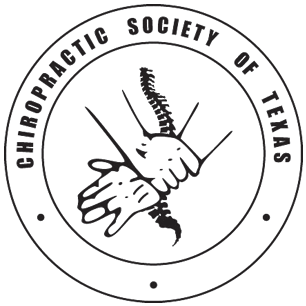History of the Chiropractic Society of Texas
The Early Days of Chiropractic in Texas
I graduated from the Palmer School of Chiropractic in Davenport, Iowa in June 1947 returning to Texas to establish myself in a straight Chiropractic practice. I mention the word “straight” because at that time in Texas there were two distinct and different types of Chiropractic being practiced. Mixer and Straight were the common terms used to differentiate between them. For those not familiar with this period of Chiropractic history, the main differences were as follows: A Straight practice was based on the detection and correction of spinal/vertebral subluxations, by hand only. A mixer practice included adjuncts such as colonic machines, massage, application of heat and cold and soft tissue manipulation. Often food supplements and vitamins were sold in the office.
There was not a Chiropractic Act in Texas in 1947 to enable one to become a licensed Chiropractor in Texas. One simply opened an office to receive patients – hoping to not be arrested and charged with practicing Chiropractic without a license. This happened many times.
The first Chiropractic Act contained many things that were determined by the Texas Supreme Court to be unconstitutional. It had been declared null and void before I returned to Texas in 1947.
A small group of straight Chiropractors had organized and received a Texas Charter under the name of “Texas Chiropractic Research Society.” This group was mainly responsible for the successful cancellation of the first Chiropractic Act.
The Texas Chiropractic Act of 1949
A State Senator, named Dorsey Hardamon from San Angelo, Texas became interested in drafting a sound, legal Chiropractic Act. In cooperation with the Texas Chiropractic Research Society, Senator Hardamon drafted and introduced a bill in the 1949 Legislature. It was enacted without being amended and became the Texas Chiropractic Act. It has been amended many times since its enactment in 1949.
The Texas State Chiropractic Association, the larger of the two state chiropractic organizations, was also very active in getting our present law enacted. All Chiropractors that were in practice then were licensed under a “Grandfather Clause.” The first licenses issued were dated in the summer of 1949. It is interesting to note that the first fifty numbers were reserved and issued to those that were directly involved and officers of the two organizations.
In the late forties and fifties, Chiropractors frequently met in small groups for the purpose of study and research. This has two-fold results in that social and professional relationships and friendships were maintained and everyone obtained new knowledge. The upper cervical spine and occiput were the main areas of study, along with developing research in thermal patterns of the Neurocalograph and the interpretations of spinographs.
Medicare Accepts Chiropractic
In the 1960’s, Medicare began accepting Chiropractic claims from all the Texas chiropractors that had successfully passed the examination given by the State Board of Chiropractic Examiners. This meant that the large group of Chiropractors that had been grandfathered in 1949 were not eligible to participate. In order for these Texas Chiropractors to become primary care providers, the TBCE decided to have a special Texas Board for them.
Over the years the Texas Chiropractic Act has been amended and evolved so as to represent the Chiropractic practice as it actually is in Texas. The once strict definitions in the Act have changed to reflect an all-purpose type of practice that is the type practice mostly found in Texas at the time. There are only a few practices remaining that reflect a Subluxation based practice exclusively.


